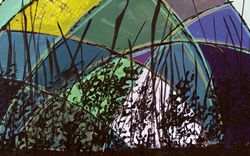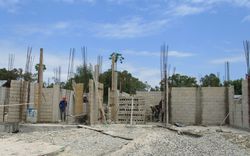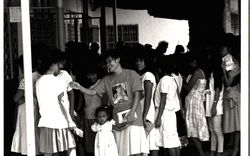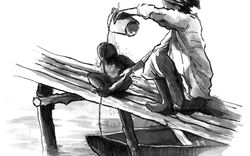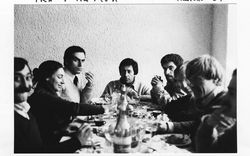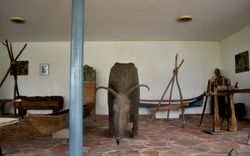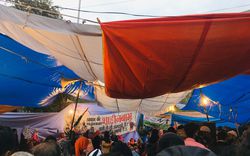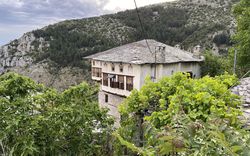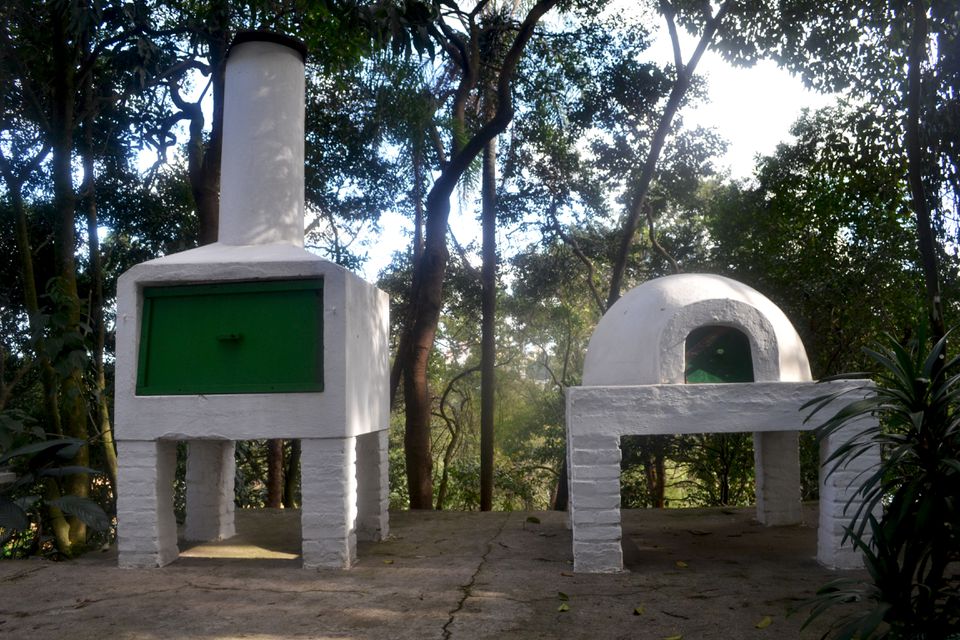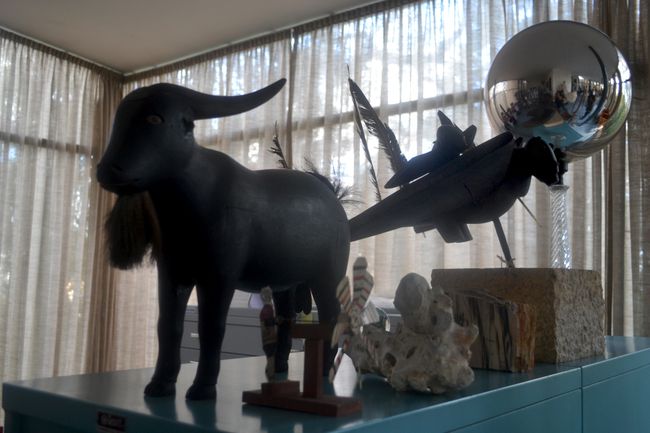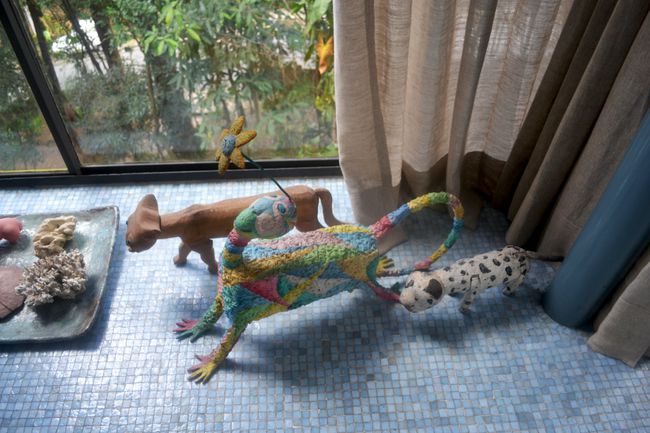Lina Bo Bardi as Migrant: from Collector to Cohabitant
Ana María León on modernity, coloniality, and identity
In 2016, the São Paulo Museum of Art (MASP) remounted its inaugural 1969 exhibition titled “The Hand of the Brazilian People,” curated by the museum’s architect, Italian migrant Lina Bo Bardi. In the words of the museum, the exhibition was a radical example of “decolonizing the museum practice,” rethinking it from a bottom-up perspective.1 The anonymously-made objects were put forward by Bo Bardi as a form of cultural production that countered the immanent, canonized art object, following efforts first initiated when she worked in Salvador de Bahia in the late 1950s. The 2016 exhibition contributed to the ongoing celebration of Bo Bardi as a daring leftist female architect ahead of her time. In contrast to these hagiographic approaches, architect and curator Paulo Tavares offers a more critical view of Bo Bardi. Tavares examines the problematic appropriation of Indigenous cultures that Bo Bardi performed as editor of the journal Habitat, which he finds paradigmatic of modernism’s colonial view.2 Such a position, he argues, was not particular to Bo Bardi alone, but part and parcel of much of Brazil’s long history of settler colonialism and modernity, from the Portuguese conquest to Lúcio Costa’s Brasília.3 Confronting MASP’s celebration with Tavares’ critical assessment begs the question, is Bo Bardi’s act of collecting the popular a decolonization of the museum, or an entrenchment of modernism’s complicity with colonialism?
-
MASP, “A mão do Povo Brasileiro, 1969/2016,” https://masp.org.br/exposicoes/a-mao-do-povo-brasileiro-19692016. ↩
-
Paulo Tavares, Des-Habitat (Berlin: Verlag, 2018). ↩
-
More recently, Tavares has written on the settler tropes present in Brasília’s design and construction. See Tavares, “Brasília: Colonial Capital” in e-flux Settler Colonial Present (14 October 2020), https://www.e-flux.com/architecture/the-settler-colonial-present/351834/braslia-colonial-capital/. ↩
A partial answer to this question can be gleaned from the work of Aníbal Quijano, who has led several Latin American theorists in speculating on the coloniality of power as the hidden side of modernity. Modernity’s liberatory guise, Quijano argues, conceals the production of inequality.1 We can trace these dynamics through the ways in which Bo Bardi shaped her work and life in Brazil. The exhibition of popular objects from the rich material culture of Brazil in the glass box of MASP resonates with Bo Bardi’s own production of her domestic sphere, in another glass box that she designed—the Casa de Vidro (Glass House), her house in São Paulo’s wealthy suburb of Morumbi, which she designed in 1950 and lived in with her husband Pietro Maria Bardi. The architecture of the house reveals many of the challenges Bo Bardi negotiated in Brazil. The kitchen, filled with time- and space-saving gadgets, is literally a bridge between the main house and the domestic workers’ quarters. Domestic workers were most likely a necessity for a working woman who did not always have time to cook and clean, but the presence of these quarters in the house reminds us of the couple’s status and wealth, and of Brazil’s own status as a country divided by income, race, and class.2 Later in her life Bo Bardi made important additions, including two outdoor ovens, rough steps with ceramic inserts, and a small detached office featuring a pitched roof and wooden construction. The ovens, a traditional Brazilian feature, contrast with the international style modern kitchen.3 The vernacular, rough finishes of these insertions on the property stand out from the polished glass, metal, and concrete of the original house. She also famously populated her house with quotidian, anonymously-produced, handcrafted objects from the Brazilian Northeast. These objects were thus also displaced, and repurposed to populate Bo Bardi’s modernist interior.
-
I point here to Aníbal Quijano and other Latin American theorists’ understanding of the coloniality of power as the hidden side of modernity. Quijano, “Coloniality of Power, Eurocentrism, and Latin America,” in Nepantla: Views from South 1:3 (2000): 533–580. ↩
-
Many modernist houses included domestic quarters, including Le Corbusier’s Villa Stein, Mies van der Rohe’s Tugendhat, and Luis Barragán’s own house. See Francisco Quiñones, “Mi casa es mi refugio: At the Service of Mexican Modernism in Casa Barragán,” The Avery Review 48 (June 2020), http://averyreview.com/issues/48/mi-casa. Brazilian sociologist Gilberto Freyre’s drawing of a Brazilian plantation house, first published in 1933, problematically rendered a similar architectural division between masters and enslaved workers as a celebration. See Freyre, The Masters and the Slaves (Casa-Grande & Senzala): A Study in the Development of Brazilian Civilization (New York: Knopf, 1956). ↩
-
The ovens also point to Brazil’s complicated settler history, since they are used to cook non-Indigenous staples: swine and cattle are not Indigenous to the Americas. ↩
Certainly, modern architects—in particular European modern artists and architects—have a long history of fetishizing and “othering” cultures beyond their own experience: André Breton, Le Corbusier, Josep Lluís Sert, and many others had collections of Indigenous objects they celebrated in both problematic and dismissive ways. These objects are part and parcel of a colonial gaze, and this mostly European celebration of a so-called “primitive” is part of a longer history of colonial appropriation of artifacts and objects from other cultures. What distances Bo Bardi from these well-known personalities is that her relationship with the popular production of Brazil was not static. Her writings evolved from the reproduction of a Eurocentric gaze, to enthusiastic but problematic appropriation, to eager claims for a politics of the popular. While her collecting efforts intervened in the context of a larger colonial attitude that modern architects in Brazil possessed, her distance from these (mostly male) architects also allowed her to understand her own distance from the cultural groups she admired but did not belong to.
Lina Bo Bardi’s act of collecting was part of a landscape of complications in her position as an Italian in Brazil, a woman in a profession dominated by men, an advocate of the popular living a comfortable life in a wealthy suburb, and a self-identified leftist married to Pietro Maria Bardi—a curator with a well-known fascist past.1 She was also the editor of one of the first monographs on her own architectural production, and thus contributed to the celebratory, enthusiastic tone that has marked much of the coverage of her work.2 If she participated in a colonialist gaze, she also confronted this gaze as well as her own complicated position in these debates. She forcefully argued against artistic genius and in favor of the popular production of objects as a true art of the people. The presence of these objects in her house was not accidental—they were welcome roommates, invited to share the modernist box.
-
While much has been made of Bo Bardi’s status as a woman in a mostly male profession, there has been less discussion of the problematic nature of PM Bardi’s collaborations with Mussolini in Italy and of the couple’s collaboration with and funding by media mogul Francisco de Assis Chateaubriand Bandeira de Melo, known as Chatô, in Brasil. I have presented ongoing research related to these connections at SAH 2016, EAUH 2016, and CAA 2018. ↩
-
Lina Bo Bardi, ed. Marcelo Carvalho Ferraz and Lina Bo Bardi (São Paulo: Instituto Lina Bo e P.M. Bardi, 1993). Zeuler Lima’s important biography has nuanced our understanding of Bo Bardi. See Zeuler Lima, Lina Bo Bardi (New Haven: Yale University Press, 2013). ↩
When I visited the house in 2011, many of these objects had been removed due to inheritance claims—a second displacement.1 Still, the Instituto Lina Bo e P.M. Bardi curators had attempted to replicate Bo Bardi’s presentation, in which these fauna-inspired objects took precedence. They didn’t seem to be on display—rather, they appeared to sit, stand, and roam over bookcases, tables, and floors, taking over the living spaces of the house. While Bo Bardi came to consider Brazil as her own country, she embodied multiple identities—a woman, a foreigner, a migrant, a settler. There is a gradual transition from her first museum commissions designed for the display of objects, to the SESC Pompéia (1977–1986), an old factory repurposed into a neighborhood leisure centre by mindfully designing the program around the publics it serves. A similar transition can be noted from her first Eurocentric displays, in which she framed these objects as fetishized curiosities, and the way these objects came to inhabit her domestic realm. This distance suggests that Bo Bardi shifted her initial approach as a collector toward a gesture of cohabitation.2 However, this gesture does not erase the complicated identities she embodied and how they informed her work. Thinking with Quijano, the presence of these objects in the house reveals the coloniality within Bo Bardi’s modernity.
-
When PM Bardi died seven years after Lina, in 1999, heirs of his first marriage claimed part of the collection, the Instituto Lina Bo e P.M. Bardi has since struggled with the challenges of presenting the house. When I visited, they had attempted to replicate Bo Bardi’s presentation. More recently, curator Renato Anelli has preferred to “assume this void.” Elisa Wouk Almino, “Lina Bo Bardi’s Glass House and the Multiple Worlds It Contains,” Hyperallergic (21 November 2016), https://hyperallergic.com/335348/lina-bo-bardis-glass-house-and-the-multiple-worlds-it-contains/. ↩
-
On 4 August 2021, the Instituto Bardi launched a new website with expanded digital access, available at https://portal.institutobardi.org/en/. The launch was announced with a press release at e-flux, https://www.e-flux.com/announcements/408657/new-website-online-archive-and-redesign/. ↩
